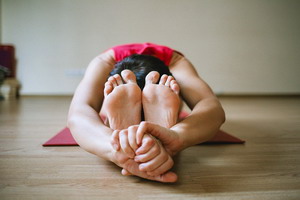 Is stretching a good idea for us? Why would we want to do it? When is it a bad idea? Stretching has been standard advice in the physical culture world for hundreds of years. Currently, the stretching postures called asanas in yoga are all the rage. I certainly hear many glowing reports from clients and yoga teachers alike about the benefits they experience from engaging in these practices. So what benefits are we talking about?
Is stretching a good idea for us? Why would we want to do it? When is it a bad idea? Stretching has been standard advice in the physical culture world for hundreds of years. Currently, the stretching postures called asanas in yoga are all the rage. I certainly hear many glowing reports from clients and yoga teachers alike about the benefits they experience from engaging in these practices. So what benefits are we talking about?
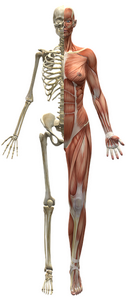 As usual, I like to take the understanding a notch deeper than the typical answers folks find with an internet search. That means understanding a bit about how the body works. Most everyone is aware we have a skeleton with a bunch of muscles tying it all together and forming a meat bag for a bunch of organs and the brain. This is all good, but there is more to this picture that explains why stretching properly is important. If you went to the butcher and bought a pile of meat, bones, and organs, and laid them on your kitchen counter, you would find everything in the pile would be slipping and sliding around and probably much of it would end up on your kitchen floor. That is because what you don’t know is that a big part of the job of a meat cutter is to cut away all the glue-like connective tissue that ties everything together. Connective tissue is the main reason why stretching is valuable.
As usual, I like to take the understanding a notch deeper than the typical answers folks find with an internet search. That means understanding a bit about how the body works. Most everyone is aware we have a skeleton with a bunch of muscles tying it all together and forming a meat bag for a bunch of organs and the brain. This is all good, but there is more to this picture that explains why stretching properly is important. If you went to the butcher and bought a pile of meat, bones, and organs, and laid them on your kitchen counter, you would find everything in the pile would be slipping and sliding around and probably much of it would end up on your kitchen floor. That is because what you don’t know is that a big part of the job of a meat cutter is to cut away all the glue-like connective tissue that ties everything together. Connective tissue is the main reason why stretching is valuable.
 What is connective tissue? Just as the name implies, it is a bunch of slimy glue that holds our inner parts together. When you look at a set of six-pack abs, the creases that form the six-pack are made of connective tissue. The bulges are the muscles. The outer bag of skin that surrounds our body is a type of connective tissue. If we were a tall building, the steel girders supporting the weight would be the bones, but the walls that form rooms and hallways and outer surfaces would be connective tissue. The wiring in the building would be the nerves and the plumbing would be our digestive tract. No one talks much about connective tissue except in the context of hating wrinkles.
What is connective tissue? Just as the name implies, it is a bunch of slimy glue that holds our inner parts together. When you look at a set of six-pack abs, the creases that form the six-pack are made of connective tissue. The bulges are the muscles. The outer bag of skin that surrounds our body is a type of connective tissue. If we were a tall building, the steel girders supporting the weight would be the bones, but the walls that form rooms and hallways and outer surfaces would be connective tissue. The wiring in the building would be the nerves and the plumbing would be our digestive tract. No one talks much about connective tissue except in the context of hating wrinkles.
 Now here is an important detail that gets ignored. Connective tissue is always growing. We understand that when it comes to our skin. The top layers flake off and fresh new skin grows from the inside outward. The lining of our GI tract replaces itself every 5 to 7 days. But what about the connective tissue around our muscles and organs? Here is a clue. When we have an injury that connective tissue is what seals the injury closed with what we call scar tissue. Scar tissue and connective tissue are the same thing. The connective tissue reacts to the inflammatory chemicals that are released from the damaged tissues and starts growing like crazy. The thing is, we are always releasing small amounts of these inflammatory chemicals just from cells dying and being reprocessed. Plus normal living entails tiny muscle strains all the time, which are tiny tears of the muscle tissue. As a result, this connective tissue is always being told to grow and form dense scar-type tissue. Movement is what keeps us from turning into one huge knot of scar tissue.
Now here is an important detail that gets ignored. Connective tissue is always growing. We understand that when it comes to our skin. The top layers flake off and fresh new skin grows from the inside outward. The lining of our GI tract replaces itself every 5 to 7 days. But what about the connective tissue around our muscles and organs? Here is a clue. When we have an injury that connective tissue is what seals the injury closed with what we call scar tissue. Scar tissue and connective tissue are the same thing. The connective tissue reacts to the inflammatory chemicals that are released from the damaged tissues and starts growing like crazy. The thing is, we are always releasing small amounts of these inflammatory chemicals just from cells dying and being reprocessed. Plus normal living entails tiny muscle strains all the time, which are tiny tears of the muscle tissue. As a result, this connective tissue is always being told to grow and form dense scar-type tissue. Movement is what keeps us from turning into one huge knot of scar tissue.
 This is the key reason why we need to stretch. With stretching we keep breaking the tiny connective tissue ropes that are forming all the time trying to tie up our muscles and keep our bones together. We live in a constant balancing act between muscle flexibility and muscle strength. Muscles need to be able to lengthen and shorten to do their jobs, but they also need to be strong to prevent tearing. It is the connective tissue sheaths around the muscles that provide that strength. So we must build and break apart any excess connective tissue daily. When we don’t do this, the muscles get chronically tight and gritty. I feel this every day in patients. When it gets bad I use my guasha tool to help break up this gritty excess connective tissue. This is not comfortable for the patient, so it is much better to simply make sure that you move each of your joints through their full range of motion every day. This is where a good stretching routine comes in.
This is the key reason why we need to stretch. With stretching we keep breaking the tiny connective tissue ropes that are forming all the time trying to tie up our muscles and keep our bones together. We live in a constant balancing act between muscle flexibility and muscle strength. Muscles need to be able to lengthen and shorten to do their jobs, but they also need to be strong to prevent tearing. It is the connective tissue sheaths around the muscles that provide that strength. So we must build and break apart any excess connective tissue daily. When we don’t do this, the muscles get chronically tight and gritty. I feel this every day in patients. When it gets bad I use my guasha tool to help break up this gritty excess connective tissue. This is not comfortable for the patient, so it is much better to simply make sure that you move each of your joints through their full range of motion every day. This is where a good stretching routine comes in.
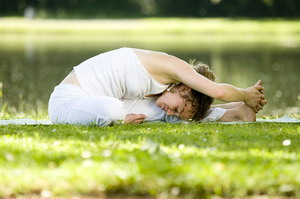 So what does conventional medicine say about stretching? Harvard Medical School says stretching is necessary to keep muscles flexible, strong, and healthy. It should be performed every day. If you don’t stretch, your muscles get shorter and tighter and you risk joint and muscle damage. They suggest starting with your hamstrings, calves, glutes, and quads. Sitting down with your legs stretched out in front of you and bending forward stretches the first three of these. Stretching:
So what does conventional medicine say about stretching? Harvard Medical School says stretching is necessary to keep muscles flexible, strong, and healthy. It should be performed every day. If you don’t stretch, your muscles get shorter and tighter and you risk joint and muscle damage. They suggest starting with your hamstrings, calves, glutes, and quads. Sitting down with your legs stretched out in front of you and bending forward stretches the first three of these. Stretching:
Increases your flexibility
Improves your range of motion
Improves your performance in activities
Increases the blood flow to your muscles
Improves your posture
Helps heal back pain
Relieves tension
Reduces stress and calms the mind
 These are good things, but there are proper dos and don’ts with stretching. The biggest caution is to never stretch your muscles before they have warmed up with some type of exercise first. In the old days, athletic trainers would have you stretch your muscles before doing training. The old belief was that this would help you prevent muscle injuries. Well, real-world experience taught them that this was completely wrong. Exercise first then stretch. Other cautions are to avoid ballistic bounce-type stretches. Again these were once thought to be great, but excessive injuries proved this to be false. Don’t overdo it. Stretching multiple times per day can over-stretch muscles and cause muscle tearing. Don’t stretch into pain. Stretch to the edge of slight discomfort and no further. Pain is a signal that injury is occurring.
These are good things, but there are proper dos and don’ts with stretching. The biggest caution is to never stretch your muscles before they have warmed up with some type of exercise first. In the old days, athletic trainers would have you stretch your muscles before doing training. The old belief was that this would help you prevent muscle injuries. Well, real-world experience taught them that this was completely wrong. Exercise first then stretch. Other cautions are to avoid ballistic bounce-type stretches. Again these were once thought to be great, but excessive injuries proved this to be false. Don’t overdo it. Stretching multiple times per day can over-stretch muscles and cause muscle tearing. Don’t stretch into pain. Stretch to the edge of slight discomfort and no further. Pain is a signal that injury is occurring.
 There are many types of stretching techniques. Yoga, we have mentioned already. Tai chi is another controlled stretching technique. Dynamic stretching is simply movement using a full range of motion. This is what you might do to warm up muscles before doing other types of stretching. Static stretching is extending the area to be stretched to its limit without pain and holding that position for 10 to 20 seconds. I find that if I pulse this stretch by moving into and out of the stretch I am able to lengthen the muscle nicely. A more therapeutic muscle technique is using PNF stretching. This engages a protective muscle reflex to induce the muscle to relax. Some examples include the hold-relax method in which the therapist stretches the muscle up to its max and then you contract the muscle without movement at that point (an isometric contraction). After the contraction, the therapist has 6 to 8 seconds during which the muscle will be able to stretch a bit further. Another PNF technique is the contract-relax. This is similar to the hold-relax except instead of you doing an isometric contraction, you contract/push against the therapist as they gradually let the muscle extend. At the end of the extension, the therapist then stretches you again, this time more easily and further than before.
There are many types of stretching techniques. Yoga, we have mentioned already. Tai chi is another controlled stretching technique. Dynamic stretching is simply movement using a full range of motion. This is what you might do to warm up muscles before doing other types of stretching. Static stretching is extending the area to be stretched to its limit without pain and holding that position for 10 to 20 seconds. I find that if I pulse this stretch by moving into and out of the stretch I am able to lengthen the muscle nicely. A more therapeutic muscle technique is using PNF stretching. This engages a protective muscle reflex to induce the muscle to relax. Some examples include the hold-relax method in which the therapist stretches the muscle up to its max and then you contract the muscle without movement at that point (an isometric contraction). After the contraction, the therapist has 6 to 8 seconds during which the muscle will be able to stretch a bit further. Another PNF technique is the contract-relax. This is similar to the hold-relax except instead of you doing an isometric contraction, you contract/push against the therapist as they gradually let the muscle extend. At the end of the extension, the therapist then stretches you again, this time more easily and further than before.
 As you can see, there are many ways to stretch your muscles, some you can do yourself and others with a partner. While there is not a lot of glamour to stretching, it is still vital to retaining your muscle function day to day. This is especially important now that our lifestyle includes long periods without movement. Sitting at a desk or on a couch is completely alien to our body. This lack of movement allows connective tissue to build and strengthen fibers that will end up tying down and restricting muscular movement. We see this all the time as folks age. They look like they are folding up into a ball. All the time they spend sitting with a head-forward posture gradually becomes a permanent body posture. Nobody wants this from what I hear from patients. Here is a nice pictorial essay of 24 good stretches.
As you can see, there are many ways to stretch your muscles, some you can do yourself and others with a partner. While there is not a lot of glamour to stretching, it is still vital to retaining your muscle function day to day. This is especially important now that our lifestyle includes long periods without movement. Sitting at a desk or on a couch is completely alien to our body. This lack of movement allows connective tissue to build and strengthen fibers that will end up tying down and restricting muscular movement. We see this all the time as folks age. They look like they are folding up into a ball. All the time they spend sitting with a head-forward posture gradually becomes a permanent body posture. Nobody wants this from what I hear from patients. Here is a nice pictorial essay of 24 good stretches.
Here is a bit of fun along these lines…
Take care,
David
Ellen
 Ellen took me out for Valentine’s Day. We went to Ruth’s Chris, one of our favorite restaurants. I had a nice fillet and Ellen had the sea Bass. We went a couple days early to avoid the holiday crowds. It was very lovely to go out with my sweetie pie for a delicious dinner.
Ellen took me out for Valentine’s Day. We went to Ruth’s Chris, one of our favorite restaurants. I had a nice fillet and Ellen had the sea Bass. We went a couple days early to avoid the holiday crowds. It was very lovely to go out with my sweetie pie for a delicious dinner.
 Cannabis extract inhibits melanoma
Cannabis extract inhibits melanoma
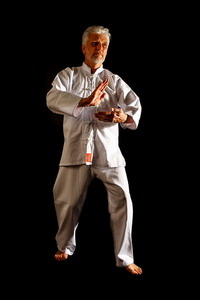 Tai Chi better at reducing blood pressure than aerobics.
Tai Chi better at reducing blood pressure than aerobics.
 Exoskeleton for Parkinson’s patients
Exoskeleton for Parkinson’s patients
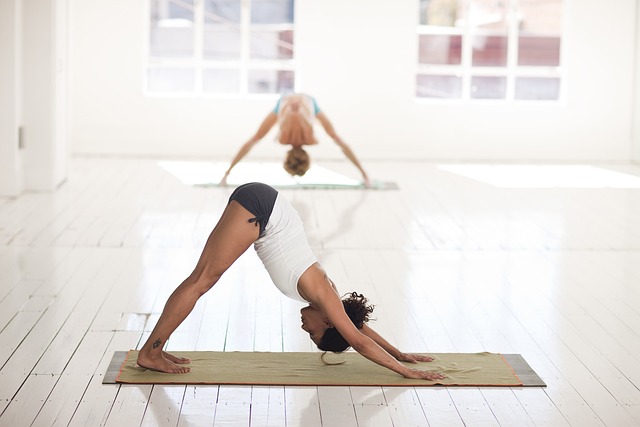
 Is stretching a good idea for us? Why would we want to do it? When is it a bad idea? Stretching has been standard advice in the physical culture world for hundreds of years. Currently, the stretching postures called asanas in yoga are all the rage. I certainly hear many glowing reports from clients and yoga teachers alike about the benefits they experience from engaging in these practices. So what benefits are we talking about?
Is stretching a good idea for us? Why would we want to do it? When is it a bad idea? Stretching has been standard advice in the physical culture world for hundreds of years. Currently, the stretching postures called asanas in yoga are all the rage. I certainly hear many glowing reports from clients and yoga teachers alike about the benefits they experience from engaging in these practices. So what benefits are we talking about? As usual, I like to take the understanding a notch deeper than the typical answers folks find with an internet search. That means understanding a bit about how the body works. Most everyone is aware we have a skeleton with a bunch of muscles tying it all together and forming a meat bag for a bunch of organs and the brain. This is all good, but there is more to this picture that explains why stretching properly is important. If you went to the butcher and bought a pile of meat, bones, and organs, and laid them on your kitchen counter, you would find everything in the pile would be slipping and sliding around and probably much of it would end up on your kitchen floor. That is because what you don’t know is that a big part of the job of a meat cutter is to cut away all the glue-like connective tissue that ties everything together. Connective tissue is the main reason why stretching is valuable.
As usual, I like to take the understanding a notch deeper than the typical answers folks find with an internet search. That means understanding a bit about how the body works. Most everyone is aware we have a skeleton with a bunch of muscles tying it all together and forming a meat bag for a bunch of organs and the brain. This is all good, but there is more to this picture that explains why stretching properly is important. If you went to the butcher and bought a pile of meat, bones, and organs, and laid them on your kitchen counter, you would find everything in the pile would be slipping and sliding around and probably much of it would end up on your kitchen floor. That is because what you don’t know is that a big part of the job of a meat cutter is to cut away all the glue-like connective tissue that ties everything together. Connective tissue is the main reason why stretching is valuable. What is connective tissue? Just as the name implies, it is a bunch of slimy glue that holds our inner parts together. When you look at a set of six-pack abs, the creases that form the six-pack are made of connective tissue. The bulges are the muscles. The outer bag of skin that surrounds our body is a type of connective tissue. If we were a tall building, the steel girders supporting the weight would be the bones, but the walls that form rooms and hallways and outer surfaces would be connective tissue. The wiring in the building would be the nerves and the plumbing would be our digestive tract. No one talks much about connective tissue except in the context of hating wrinkles.
What is connective tissue? Just as the name implies, it is a bunch of slimy glue that holds our inner parts together. When you look at a set of six-pack abs, the creases that form the six-pack are made of connective tissue. The bulges are the muscles. The outer bag of skin that surrounds our body is a type of connective tissue. If we were a tall building, the steel girders supporting the weight would be the bones, but the walls that form rooms and hallways and outer surfaces would be connective tissue. The wiring in the building would be the nerves and the plumbing would be our digestive tract. No one talks much about connective tissue except in the context of hating wrinkles. Now here is an important detail that gets ignored. Connective tissue is always growing. We understand that when it comes to our skin. The top layers flake off and fresh new skin grows from the inside outward. The lining of our GI tract replaces itself every 5 to 7 days. But what about the connective tissue around our muscles and organs? Here is a clue. When we have an injury that connective tissue is what seals the injury closed with what we call scar tissue. Scar tissue and connective tissue are the same thing. The connective tissue reacts to the inflammatory chemicals that are released from the damaged tissues and starts growing like crazy. The thing is, we are always releasing small amounts of these inflammatory chemicals just from cells dying and being reprocessed. Plus normal living entails tiny muscle strains all the time, which are tiny tears of the muscle tissue. As a result, this connective tissue is always being told to grow and form dense scar-type tissue. Movement is what keeps us from turning into one huge knot of scar tissue.
Now here is an important detail that gets ignored. Connective tissue is always growing. We understand that when it comes to our skin. The top layers flake off and fresh new skin grows from the inside outward. The lining of our GI tract replaces itself every 5 to 7 days. But what about the connective tissue around our muscles and organs? Here is a clue. When we have an injury that connective tissue is what seals the injury closed with what we call scar tissue. Scar tissue and connective tissue are the same thing. The connective tissue reacts to the inflammatory chemicals that are released from the damaged tissues and starts growing like crazy. The thing is, we are always releasing small amounts of these inflammatory chemicals just from cells dying and being reprocessed. Plus normal living entails tiny muscle strains all the time, which are tiny tears of the muscle tissue. As a result, this connective tissue is always being told to grow and form dense scar-type tissue. Movement is what keeps us from turning into one huge knot of scar tissue. This is the key reason why we need to stretch. With stretching we keep breaking the tiny connective tissue ropes that are forming all the time trying to tie up our muscles and keep our bones together. We live in a constant balancing act between muscle flexibility and muscle strength. Muscles need to be able to lengthen and shorten to do their jobs, but they also need to be strong to prevent tearing. It is the connective tissue sheaths around the muscles that provide that strength. So we must build and break apart any excess connective tissue daily. When we don’t do this, the muscles get chronically tight and gritty. I feel this every day in patients. When it gets bad I use my guasha tool to help break up this gritty excess connective tissue. This is not comfortable for the patient, so it is much better to simply make sure that you move each of your joints through their full range of motion every day. This is where a good stretching routine comes in.
This is the key reason why we need to stretch. With stretching we keep breaking the tiny connective tissue ropes that are forming all the time trying to tie up our muscles and keep our bones together. We live in a constant balancing act between muscle flexibility and muscle strength. Muscles need to be able to lengthen and shorten to do their jobs, but they also need to be strong to prevent tearing. It is the connective tissue sheaths around the muscles that provide that strength. So we must build and break apart any excess connective tissue daily. When we don’t do this, the muscles get chronically tight and gritty. I feel this every day in patients. When it gets bad I use my guasha tool to help break up this gritty excess connective tissue. This is not comfortable for the patient, so it is much better to simply make sure that you move each of your joints through their full range of motion every day. This is where a good stretching routine comes in. So what does conventional medicine say about stretching? Harvard Medical School says stretching is necessary to keep muscles flexible, strong, and healthy. It should be performed every day. If you don’t stretch, your muscles get shorter and tighter and you risk joint and muscle damage. They suggest starting with your hamstrings, calves, glutes, and quads. Sitting down with your legs stretched out in front of you and bending forward stretches the first three of these. Stretching:
So what does conventional medicine say about stretching? Harvard Medical School says stretching is necessary to keep muscles flexible, strong, and healthy. It should be performed every day. If you don’t stretch, your muscles get shorter and tighter and you risk joint and muscle damage. They suggest starting with your hamstrings, calves, glutes, and quads. Sitting down with your legs stretched out in front of you and bending forward stretches the first three of these. Stretching: These are good things, but there are proper dos and don’ts with stretching. The biggest caution is to never stretch your muscles before they have warmed up with some type of exercise first. In the old days, athletic trainers would have you stretch your muscles before doing training. The old belief was that this would help you prevent muscle injuries. Well, real-world experience taught them that this was completely wrong. Exercise first then stretch. Other cautions are to avoid ballistic bounce-type stretches. Again these were once thought to be great, but excessive injuries proved this to be false. Don’t overdo it. Stretching multiple times per day can over-stretch muscles and cause muscle tearing. Don’t stretch into pain. Stretch to the edge of slight discomfort and no further. Pain is a signal that injury is occurring.
These are good things, but there are proper dos and don’ts with stretching. The biggest caution is to never stretch your muscles before they have warmed up with some type of exercise first. In the old days, athletic trainers would have you stretch your muscles before doing training. The old belief was that this would help you prevent muscle injuries. Well, real-world experience taught them that this was completely wrong. Exercise first then stretch. Other cautions are to avoid ballistic bounce-type stretches. Again these were once thought to be great, but excessive injuries proved this to be false. Don’t overdo it. Stretching multiple times per day can over-stretch muscles and cause muscle tearing. Don’t stretch into pain. Stretch to the edge of slight discomfort and no further. Pain is a signal that injury is occurring. There are many types of stretching techniques. Yoga, we have mentioned already. Tai chi is another controlled stretching technique. Dynamic stretching is simply movement using a full range of motion. This is what you might do to warm up muscles before doing other types of stretching. Static stretching is extending the area to be stretched to its limit without pain and holding that position for 10 to 20 seconds. I find that if I pulse this stretch by moving into and out of the stretch I am able to lengthen the muscle nicely. A more therapeutic muscle technique is using PNF stretching. This engages a protective muscle reflex to induce the muscle to relax. Some examples include the hold-relax method in which the therapist stretches the muscle up to its max and then you contract the muscle without movement at that point (an isometric contraction). After the contraction, the therapist has 6 to 8 seconds during which the muscle will be able to stretch a bit further. Another PNF technique is the contract-relax. This is similar to the hold-relax except instead of you doing an isometric contraction, you contract/push against the therapist as they gradually let the muscle extend. At the end of the extension, the therapist then stretches you again, this time more easily and further than before.
There are many types of stretching techniques. Yoga, we have mentioned already. Tai chi is another controlled stretching technique. Dynamic stretching is simply movement using a full range of motion. This is what you might do to warm up muscles before doing other types of stretching. Static stretching is extending the area to be stretched to its limit without pain and holding that position for 10 to 20 seconds. I find that if I pulse this stretch by moving into and out of the stretch I am able to lengthen the muscle nicely. A more therapeutic muscle technique is using PNF stretching. This engages a protective muscle reflex to induce the muscle to relax. Some examples include the hold-relax method in which the therapist stretches the muscle up to its max and then you contract the muscle without movement at that point (an isometric contraction). After the contraction, the therapist has 6 to 8 seconds during which the muscle will be able to stretch a bit further. Another PNF technique is the contract-relax. This is similar to the hold-relax except instead of you doing an isometric contraction, you contract/push against the therapist as they gradually let the muscle extend. At the end of the extension, the therapist then stretches you again, this time more easily and further than before. As you can see, there are many ways to stretch your muscles, some you can do yourself and others with a partner. While there is not a lot of glamour to stretching, it is still vital to retaining your muscle function day to day. This is especially important now that our lifestyle includes long periods without movement. Sitting at a desk or on a couch is completely alien to our body. This lack of movement allows connective tissue to build and strengthen fibers that will end up tying down and restricting muscular movement. We see this all the time as folks age. They look like they are folding up into a ball. All the time they spend sitting with a head-forward posture gradually becomes a permanent body posture. Nobody wants this from what I hear from patients.
As you can see, there are many ways to stretch your muscles, some you can do yourself and others with a partner. While there is not a lot of glamour to stretching, it is still vital to retaining your muscle function day to day. This is especially important now that our lifestyle includes long periods without movement. Sitting at a desk or on a couch is completely alien to our body. This lack of movement allows connective tissue to build and strengthen fibers that will end up tying down and restricting muscular movement. We see this all the time as folks age. They look like they are folding up into a ball. All the time they spend sitting with a head-forward posture gradually becomes a permanent body posture. Nobody wants this from what I hear from patients.  Ellen took me out for Valentine’s Day. We went to Ruth’s Chris, one of our favorite restaurants. I had a nice fillet and Ellen had the sea Bass. We went a couple days early to avoid the holiday crowds. It was very lovely to go out with my sweetie pie for a delicious dinner.
Ellen took me out for Valentine’s Day. We went to Ruth’s Chris, one of our favorite restaurants. I had a nice fillet and Ellen had the sea Bass. We went a couple days early to avoid the holiday crowds. It was very lovely to go out with my sweetie pie for a delicious dinner.